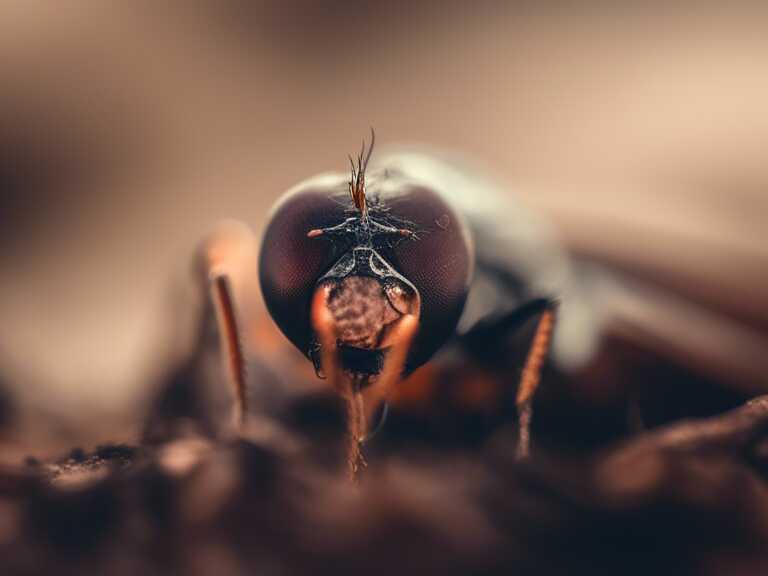
Texas Warns of New World Screwworm Threat to Animals as Parasite Spreads Northward
Texas officials warn of the New World Screwworm's potential impact on animals, urging vigilance and reporting of affected wildlife to protect agriculture.

As 2024 unfolds, the Texas Parks and Wildlife Department has issued a critical advisory to outdoor enthusiasts, hunters, and those in proximity to wildlife and livestock across the southern state. The warning comes in response to the alarming presence of the New World Screwworm (NWS), a notorious “maneater” parasite that poses a significant threat to animals. The advisory was prompted by the discovery of NWS in a cow in Chiapas, Mexico, underscoring the need for vigilance and proactive measures to safeguard the health of animals in Texas.
The Escalating Threat of the New World Screwworm
According to the Texas Parks and Wildlife Department, the New World Screwworm has been progressively advancing northward through the Americas. This parasitic organism, known for its devastating impact on livestock, pets, and wildlife, necessitates immediate attention and action from those residing along the southern Texas border. The department strongly urges residents to monitor wildlife, livestock, and pets for any signs of NWS infestation and report any potential cases without delay. This proactive approach is crucial in curbing the spread of this dangerous parasite.
Understanding the New World Screwworm
The U.S. Department of Agriculture (USDA) describes the New World Screwworm as a “devastating pest”. The fly larvae, or maggots, inflict severe and often fatal damage to living animals by burrowing into their flesh. Infestations can affect livestock, pets, wildlife, and even humans, though the latter is a rare occurrence. The Texas Parks and Wildlife Department elaborates that the maggots lay their eggs in open wounds or natural openings of live tissue, such as nostrils, eyes, or mouth. This form of infestation is known as New World screwworm myiasis and poses a serious threat to the health and well-being of affected animals.
The scientific name for the New World Screwworm, Cochliomyia hominivorax, aptly translates to “maneater,” highlighting the gravity of its impact on living creatures. The screwworm was once a prevalent issue in the U.S., with a staggering 230,000 cases reported in 1935 alone. However, the implementation of sterile insect techniques to release sterilized male blow flies effectively curtailed the population of the screwworm and its breeding potential. This intervention has been instrumental in saving U.S. agriculture workers nearly $900 million annually in livestock losses, according to the USDA.
The Global Presence of New World Screwworms
New World Screwworms are endemic to various regions, including Cuba, Haiti, the Dominican Republic, and South America. Moreover, the USDA has noted the alarming spread of cases into Central American countries such as Costa Rica, Nicaragua, Honduras, Guatemala, and Mexico. While the USDA successfully eradicated NWS from the United States in 1966 through sterile insect techniques, the constant risk of reintroduction remains a concern. To mitigate this risk, the USDA collaborates with Panama to maintain a barrier zone in eastern Panama, aimed at preventing the northward migration of this pest into NWS-free areas in Central and North America.
Female New World Screwworm Flies
Female New World Screwworm flies exhibit a strong attraction to the odor of wounds or natural openings on live, warm-blooded animals. A single fly is capable of laying up to 300 eggs at once and may lay a staggering total of up to 3,000 eggs throughout her lifetime. The life cycle of the New World screwworm fly involves the hatching of eggs into larvae or maggots, which then burrow into an opening to feed. After feeding, the maggots drop to the ground, burrow into the soil, and eventually emerge as adult flies. The capacity of adult flies to travel long distances exacerbates the potential for the spread of NWS infestations. Additionally, the movement of infested livestock or wildlife further increases the rate of dissemination, posing a threat to unaffected areas.
Recognizing the signs of NWS myiasis is crucial for prompt intervention. Symptoms to look out for include irritated or depressed behavior, loss of appetite, head shaking, the smell of decaying flesh, the presence of maggots in wounds, and isolation from other animals or people. Timely identification of these signs can facilitate swift action to mitigate the impact of NWS infestations on affected animals.
Prevention and Precautionary Measures
The Texas Parks and Wildlife Department emphasizes the importance of preventive measures to avert NWS infestations. Individuals spending time outdoors, particularly in areas known to be affected by NWS, are strongly advised to clean and cover all wounds to minimize the risk of attracting the parasitic flies. Additionally, applying insect repellent to outdoor clothing is another effective precautionary measure to deter potential NWS infestations. By taking these proactive steps, outdoor enthusiasts and individuals engaging in activities in affected areas can significantly reduce the likelihood of NWS exposure and subsequent infestations.
Share news















